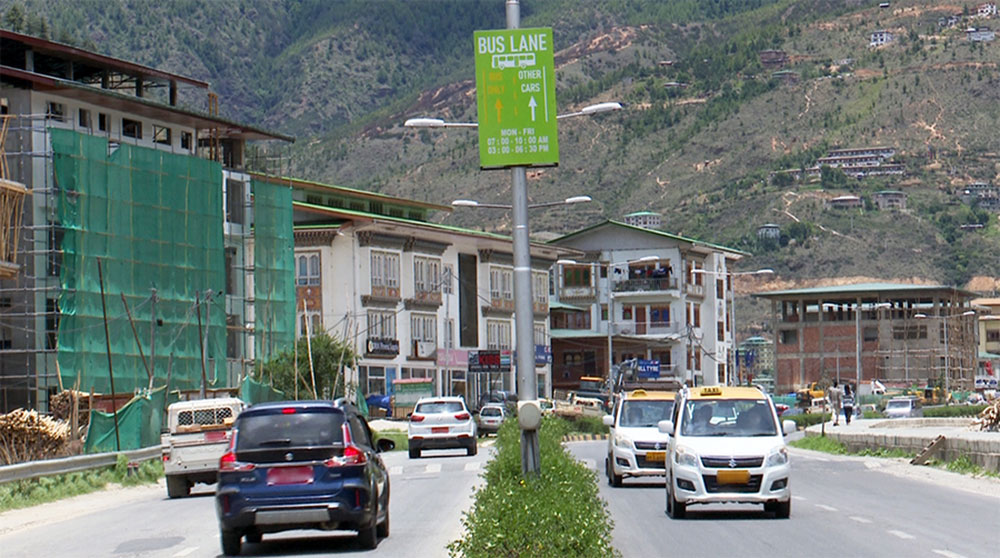Sherab Lhamo
After a five-month delay, Thimphu’s city bus priority lane pilot project will finally begin tomorrow.
Lhendup Gyeltshen, Manager of City Bus, stated that the priority lane pilot project was pushed back from August to December and then to January because more studies were needed to improve the project. Additionally, the elections were a factor in the decision to postpone the project until after the results.
The pilot project is divided into three phases. The first phase will run from Babesa Zero to the Changzamtog flyover bridge during peak hours (7-10am and 3:30-6:30pm).
During other times and on weekends, all vehicles are permitted to use the priority lane.
Following the pilot project’s postponement in August, the thromde conducted a feasibility study. According to Lhendup Gyeltshen, the study examined car movement, infrastructure, and frequency of cars during and after office hours.
The following types of vehicles are permitted to use the priority lane: ambulances, fire engines, police escorts, buses, VVIP cars, foreign diplomats, flagged cars, and any vehicle carrying patients in critical condition that needs emergency care.
It is permissible for taxis and private vehicles to use the priority lane, if there is more than two passengers.
The second phase’s implementation will be determined by the results of the first phase’s study, feedback obtained through distributed forms, and on the thromde’s social media platforms.
Lhendup Gyeltshen said that the city bus office, thromde and stakeholders have also taken into account some workable suggestions made by the general public.
The project’s main objective is to reduce fuel imports and carbon emissions while also improving the bus system’s dependability and efficiency.
Thinley Dorji, a taxi driver, said: “I saw the city bus advocacy video yesterday, and it showed that taxi drivers can use the priority lane to drop and pick up passengers.”
There is also a temporary taxi stand close to the Flyover Bridge bus stop where people can avail themselves of last-mile connectivity.
According to Lhendup Gyeltshen, some people have to go to places like Changzamtog, Kuenselphodrang, Druk School, and others, and they have the option of taking taxis to get there. Ten taxis can be accommodated at the makeshift taxi stand.
There won’t be any impact on other buses; this modification only affects the route from Babesa to the flyover bridge.
A flyer outlining the dos and don’ts of the pilot project has also been shared on social media by the city bus office.


